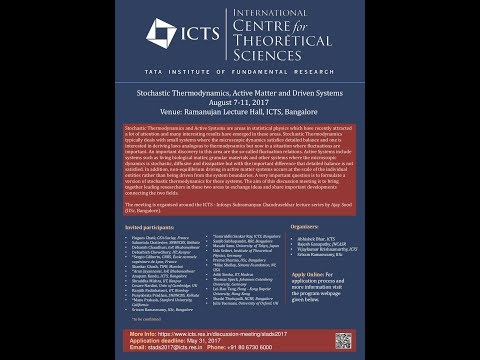Description:
Explore the fascinating intersection of topology and biology in this 52-minute lecture by Julia Yeomans at the International Centre for Theoretical Sciences. Delve into the world of active matter, stochastic thermodynamics, and driven systems, focusing on how topological concepts apply to biological phenomena. Learn about active turbulence in dense matter, liquid crystal hydrodynamics, and the role of topological defects in cell behavior. Discover how confinement can harness active energy and influence cell division processes. Examine the transition to turbulence, vortex lattice formation, and the application of topological microfluidics in biological systems. Gain insights into cutting-edge research connecting statistical physics with living biological matter, and understand how these concepts contribute to our understanding of complex biological processes.

Topology in Biology by Julia Yeomans
Add to list
#Science
#Physics
#Condensed Matter Physics
#Soft Matter Physics
#Active Matter
#Biology
#Statistical Physics
#Fluid Mechanics
#Hydrodynamics
#Materials Science
#Liquid Crystals